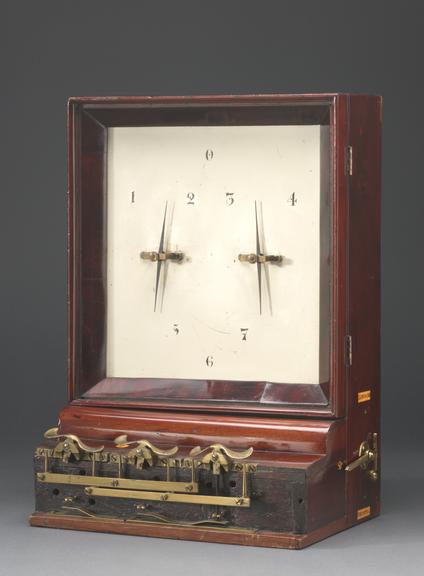
Cooke and Wheatstone’s double-needle telegraph, 1838
- Made:
- 1838 in United Kingdom
- inventor:
- CHARLES WHEATSTONE and William Fothergill Cooke
- maker:
- Unknown










Cooke's and Wheatsone's two-needle telegraph, unknown maker, British, 1838.
The earliest demonstrations of a practical electric telegraph were given in Britain in 1837. The following year, William Cooke developed a system for communicating between railway stations, using both four-needle and double-needle telegraph instruments. This small double-needle set is similar to that shown in the 1838 patent drawings. The dial has numbers only but this example may have been part of a demonstration set. A portable instrument, it was intended to be carried on trains and used in emergencies, when it would be brought out to the lineside and plugged into the nearest junction box. To keep the size of the instrument within bounds it used two needles only and thus required knowledge of a code. It is not thought that the idea saw much use at that time and it is possible that this example may have been the only one made. However, the double-needle arrangement and an alphabetical method of coding became the standard British system for over twenty years. The idea was eventually introduced on Britain's railways by means of telephones attached to railway signal posts, enabling the driver to communicate with the signalling centre. A similar concept is in use along major roads in many countries today with the roadside telephones located at intervals which are connected with motorway control centres.
Details
- Category:
- Telecommunications
- Object Number:
- 2004-105
- Materials:
- metal (unknown), wood (unidentified) and brass (copper, zinc alloy)
- Measurements:
-
overall: 385 mm x 295 mm x 182 mm, 5.56kg
- type:
- telegraph
- credit:
- Donated by BT Heritage and Archives




